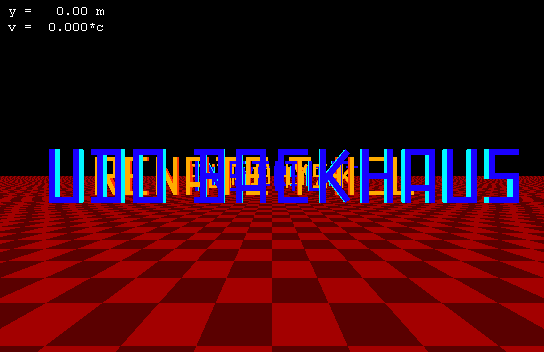|
Introduction
The contraction of fast moving bodies in the direction of their velocity is a
well-known result of special relativity: Different observers get different
results when they measure the length of an object, the shorter the larger the
relative speed between observer and object. Much less known is the fact that
this so called Lorentz-Fitzgerald contraction is invisible in the following
sense: By looking at the moving object or by photographing it one does not
observe it as shortened but, on the contrary, as lengthened and, under
certain conditions, as deformed or twisted.
We show several computer animations generated by own raytracing routines. They demonstrate the different effects caused by the finite runtime of light, Doppler effect and intensity transformation due to classical and relativistic theory, respectively.
|







